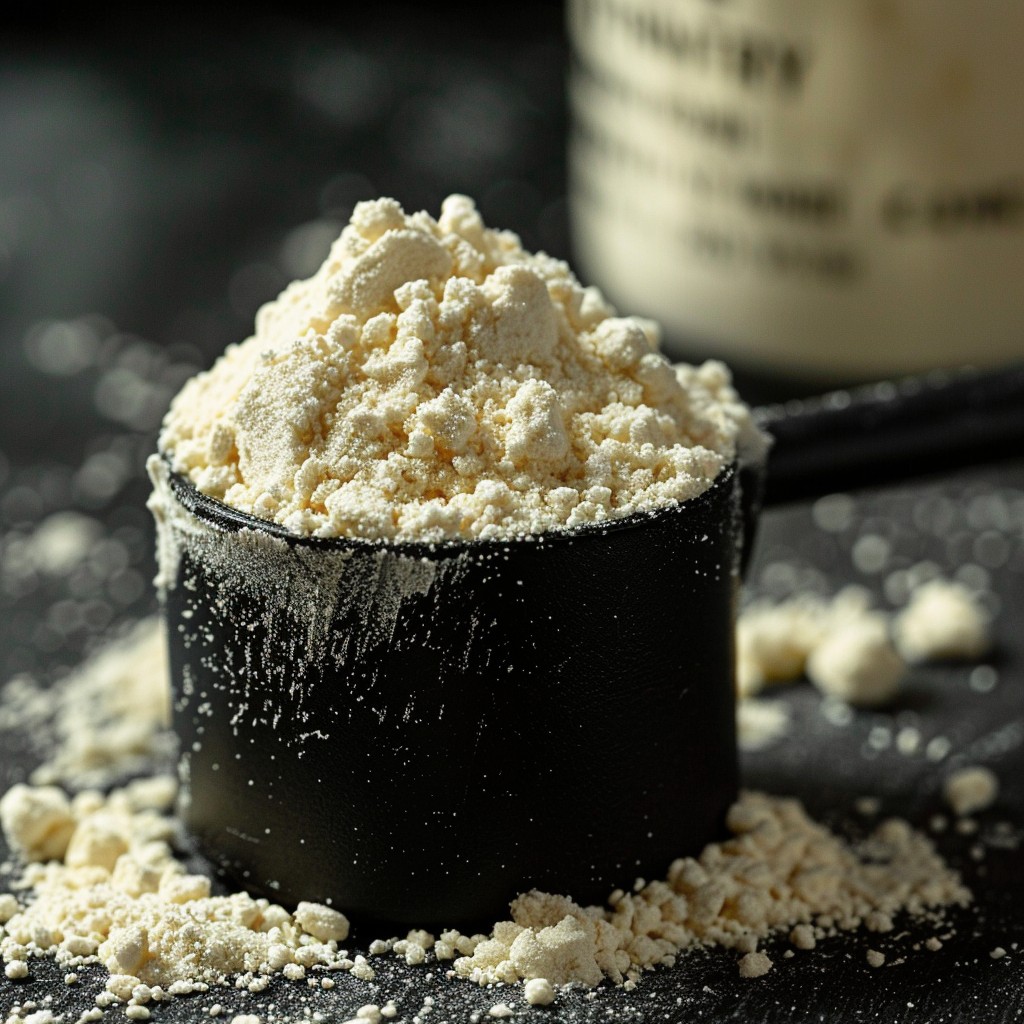weight loss powder In the pursuit of health and fitness, weight loss remains a common goal for many individuals. The market is flooded with products promising quick and effective results, among which weight loss powders have gained significant popularity. These powders, often marketed as meal replacements, protein supplements, or metabolism boosters, claim to aid in shedding pounds while providing essential nutrients. But how effective are these products, and what does science say about their role in weight management? This article explores the world of weight loss powders, delving into their ingredients, mechanisms, benefits, potential risks, and practical applications for sustainable weight loss.
What Are Weight Loss Powders?
Weight loss powder are dietary supplements designed to support weight reduction by replacing meals, enhancing metabolism, or suppressing appetite. They typically come in powdered form, mixed with water, milk, or other liquids to create a shake or smoothie. These products are marketed under various categories, including:
- Meal Replacement Shakes: Formulated to replace one or two meals per day, these powders provide a balanced mix of macronutrients (proteins, carbohydrates, and fats) and micronutrients (vitamins and minerals) with controlled calorie content.
- Protein Powders: High-protein supplements that promote muscle maintenance and satiety, often used by those engaging in exercise regimens.
- Fat Burners or Thermogenic Powders: Contain ingredients like caffeine or green tea extract, claimed to boost metabolism and increase fat oxidation.
- Appetite Suppressants: Include fiber or other compounds to promote feelings of fullness, reducing overall calorie intake.
The appeal of weight loss powder lies in their convenience, portability, and ability to provide a structured approach to calorie control. However, their efficacy depends on the quality of ingredients, the user’s lifestyle, and adherence to a balanced diet and exercise routine.
Common Ingredients in Weight Loss Powders
The effectiveness of weight loss powder hinges on their ingredients. Below are some common components and their purported benefits:
1. Protein
Protein is a cornerstone of many weight loss powder, typically derived from whey, casein, soy, pea, or hemp. High-protein diets are associated with increased satiety, reduced appetite, and preservation of lean muscle mass during weight loss. A 2015 meta-analysis published in The American Journal of Clinical Nutrition found that high-protein diets (25–35% of daily calories from protein) led to greater weight loss and fat mass reduction compared to standard-protein diets.
2. Fiber
Dietary fiber, such as psyllium husk, inulin, or glucomannan, is often included to promote fullness and support digestive health. Fiber slows gastric emptying, helping individuals feel satisfied longer. A 2017 study in Nutrients showed that glucomannan supplementation resulted in modest weight loss in overweight individuals when combined with a calorie-controlled diet.
3. Caffeine and Stimulants
Caffeine, green tea extract, and other stimulants are added to thermogenic powders to increase energy expenditure and fat oxidation. A 2019 review in Critical Reviews in Food Science and Nutrition noted that caffeine can modestly enhance fat burning, particularly when paired with exercise. However, tolerance to caffeine’s effects may develop over time, reducing its efficacy.
4. Vitamins and Minerals
Many meal replacement powders are fortified with essential vitamins and minerals to prevent nutrient deficiencies during calorie restriction. These include vitamin D, calcium, magnesium, and B vitamins, which support overall health and metabolism.
5. Sweeteners and Flavorings
To enhance palatability, weight loss powders often contain artificial sweeteners (e.g., sucralose, aspartame) or natural sweeteners (e.g., stevia, monk fruit). While these reduce calorie content, some studies suggest artificial sweeteners may disrupt gut microbiota or increase sugar cravings, though evidence is inconclusive.
6. Other Ingredients
- Medium-Chain Triglycerides (MCTs): Found in some powders, MCTs are fats that may promote fat oxidation and satiety.
- Probiotics: Included to support gut health, which may indirectly influence weight regulation.
- Herbal Extracts: Ingredients like garcinia cambogia or green coffee bean extract are marketed for weight loss, but scientific evidence supporting their efficacy is limited.
How Do Weight Loss Powders Work?
Weight loss powder operate through several mechanisms, depending on their formulation:
- Calorie Control: Meal replacement shakes provide a fixed number of calories (typically 200–400 per serving), making it easier to maintain a calorie deficit, which is essential for weight loss. A 2018 study in Obesity found that meal replacements led to greater weight loss than traditional low-calorie diets over 12 months.
- Increased Satiety: High-protein and high-fiber content helps curb hunger, reducing the likelihood of overeating. This is particularly beneficial for individuals who struggle with portion control.
- Metabolic Boost: Thermogenic ingredients like caffeine may temporarily increase metabolic rate, though the effect is modest and diminishes with regular use.
- Nutrient Density: By providing essential nutrients in a low-calorie package, these powders ensure that users meet their nutritional needs while cutting calories.
- Convenience: For busy individuals, weight loss powder offer a quick and easy alternative to preparing balanced meals, reducing reliance on high-calorie convenience foods.
Benefits of Weight Loss Powders
When used correctly, weight loss powder can offer several advantages:
- Structured Eating: They provide a clear framework for calorie intake, which can be helpful for those new to weight management.
- Portability: Powders are easy to carry and prepare, making them ideal for on-the-go lifestyles.
- Nutrient Balance: High-quality powders deliver a mix of macronutrients and micronutrients, reducing the risk of deficiencies during weight loss.
- Support for Exercise: Protein powders, in particular, aid muscle recovery and growth, complementing strength training programs.
- Psychological Ease: Replacing meals with shakes can simplify decision-making, reducing the mental burden of meal planning.
Potential Risks and Limitations
Despite their benefits, weight loss powder are not a magic bullet and come with potential drawbacks:
- Nutritional Imbalance: Relying heavily on powders may lead to deficiencies if whole foods are largely replaced. Whole foods provide phytochemicals, antioxidants, and other compounds absent in powders.
- Sustainability: Long-term adherence to meal replacement diets can be challenging. A 2020 study in The Lancet Diabetes & Endocrinology noted that many individuals regain weight after discontinuing meal replacements due to a lack of sustainable eating habits.
- Side Effects: Stimulant-based powders may cause jitteriness, insomnia, or increased heart rate. High-fiber powders can lead to digestive discomfort if not introduced gradually.
- Cost: High-quality weight loss powder can be expensive, making them less accessible for some individuals.
- Overhyped Claims: Many products exaggerate their effectiveness, leading to unrealistic expectations. Ingredients like garcinia cambogia have little evidence to support their weight loss claims.
Scientific Evidence on Efficacy
The efficacy of weight loss powder varies by type and context. Below is a summary of key findings:
- Meal Replacements: A 2019 meta-analysis in Diabetes, Obesity and Metabolism found that meal replacement diets resulted in an average weight loss of 3–7% of body weight over 12–24 weeks, with better outcomes when combined with behavioral support.
- Protein Powders: Studies, such as one published in Nutrition Reviews (2016), show that protein supplementation supports fat loss and muscle preservation during calorie restriction, especially in active individuals.
- Thermogenic Powders: Evidence for fat burners is mixed. A 2021 review in Nutrients concluded that caffeine and green tea extract have small, short-term effects on weight loss but are not sufficient on their own.
- Fiber-Based Powders: Glucomannan and other fibers show promise for modest weight loss, but results are inconsistent without dietary changes.
Overall, weight loss powder are most effective when used as part of a comprehensive plan that includes a balanced diet, regular exercise, and lifestyle modifications.
Practical Tips for Using Weight Loss Powders
To maximize the benefits of weight loss powder while minimizing risks, consider the following tips:
- Choose High-Quality Products: Look for powders with transparent ingredient lists, minimal added sugars, and third-party testing for quality assurance.
- Combine with Whole Foods: Use powders to replace one meal or snack per day, ensuring the rest of your diet includes fruits, vegetables, whole grains, and healthy fats.
- Stay Hydrated: Drink plenty of water, as high-protein and high-fiber powders can increase fluid needs.
- Pair with Exercise: Incorporate strength training and cardiovascular exercise to enhance fat loss and preserve muscle mass.
- Consult a Professional: Speak with a dietitian or healthcare provider to ensure the powder aligns with your nutritional needs and health goals.
- Monitor Progress: Track your weight, energy levels, and overall well-being to assess the powder’s effectiveness and make adjustments as needed.
The Role of Lifestyle in Weight Loss
While weight loss powder can be a useful tool, they are not a substitute for a healthy lifestyle. Sustainable weight loss requires:
- Balanced Diet: Focus on nutrient-dense foods to support long-term health.
- Regular Physical Activity: Aim for at least 150 minutes of moderate-intensity exercise per week, as recommended by the CDC.
- Adequate Sleep: Poor sleep is linked to weight gain and increased appetite, per a 2017 study in Sleep Medicine Reviews.
- Stress Management: Chronic stress can trigger overeating, so incorporate mindfulness or relaxation techniques.
Protein Shakes and Weight Loss: A Quick Guide
Protein shakes, rich in whey, casein, or plant-based proteins, are popular for weight loss. They promote satiety, reducing hunger and overeating, as shown in a 2015 American Journal of Clinical Nutrition study. High-protein diets preserve muscle mass during calorie deficits, enhancing fat loss. A 2016 Nutrition Reviews analysis confirmed protein supplementation supports weight management in active individuals. Convenient and nutrient-dense, shakes can replace high-calorie meals. However, they’re not a cure-all—sustainability requires a balanced diet and exercise. Choose quality powders, pair with whole foods, and consult professionals for optimal results.
Protein Shakes for Weight Loss
Protein shakes, packed with whey, soy, or pea protein, are a powerful tool for weight loss. They increase satiety, curbing appetite and preventing overeating, per a 2015 study in The American Journal of Clinical Nutrition. High-protein diets help preserve muscle during calorie deficits, promoting fat loss, as noted in a 2016 Nutrition Reviews analysis. Convenient and nutrient-rich, shakes can replace calorie-heavy meals. For best results, select high-quality powders, combine with whole foods, and pair with exercise. While effective, shakes aren’t a standalone solution—sustainable weight loss demands a balanced diet and healthy lifestyle.
Conclusion
Weight loss powder can be a convenient and effective tool for those seeking to shed pounds, particularly when used as part of a structured plan. Their ability to control calories, boost satiety, and provide essential nutrients makes them appealing for busy individuals or those struggling with traditional diets. However, their success depends on choosing high-quality products, combining them with whole foods, and adopting sustainable lifestyle changes. While scientific evidence supports the use of meal replacements and protein powders for modest weight loss, thermogenic and herbal-based powders often fall short of their marketed claims. Ultimately, weight loss powder are not a one-size-fits-all solution but can serve as a stepping stone toward healthier habits when used thoughtfully.






